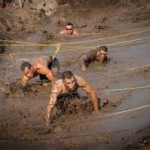 In a workout slump? One of the best ways to increase motivation is to try a new activity. For many, merely the thought of being the new kid in class conjures up uncomfortable feelings and images of being lost or not performing correctly. However, as adults, we are in charge of how we can approach a new activity with confidence, humility and yes, even a sense of humor.
In a workout slump? One of the best ways to increase motivation is to try a new activity. For many, merely the thought of being the new kid in class conjures up uncomfortable feelings and images of being lost or not performing correctly. However, as adults, we are in charge of how we can approach a new activity with confidence, humility and yes, even a sense of humor.
If you’ve been in the fitness world for a while, you may have forgotten what it feels like to be a beginner. Consider it! You may even find a new sport, workout or physical activity to love. If you’ve been thinking of trying a new exercise, make TODAY the day you become a beginner, yet again. Go ahead, get comfortable with being uncomfortable. I dare you!
Here’s how to make being a beginner a little less scary:
Talk to friends. Actually, talk to everyone and anyone you know who has participated in the activity you are considering. As them what they like and don’t like about the activity. Ask them what location, instructor, gear and technique they recommend. Also, ask what initial fitness capabilities are required.
Google it. Let’s face it, we’re no longer in a not-knowing age of technology. Simply do a search online. Play connect-the-dots with the information you find, and see where it leads you.
Request a guest pass. If you’re unsure if you’ll like the activity, save some money up front by asking for a guest pass. Many facilities and even instructors allow a first-visit-free opportunity. You’ll never know if there are discounts or free trials available unless you ask!
Try and try again. Instead of discounting the new activity right off the bat after a unpleasant experience, give it at least three attempts on three different days. Sometimes it’s a matter of finding a the right fit of location, instructor personality or class participants.
Learning takes time! You didn’t just walk on to the tennis court the first time and score an ace, so why would you expect to instantly master the skills needed during your first try? Learning is half the fun after all! Cut yourself a break, and remind yourself that learning a new activity takes time.
 Subscribe
Subscribe




